
The Enchanting Waters of Los Chorros de la Calera
Discover the enchanting waterfalls of Los Chorros de la Calera in El Salvador, a hidden paradise offering breathtaking scenery, refreshing swims, and scenic hikes.
Nestled in the lush hills of Juayúa in El Salvador, Los Chorros de la Calera is a breathtaking waterfall destination that offers a serene escape into nature. These stunning falls are a hidden gem, surrounded by dense forests and vibrant greenery, making it a perfect spot for nature lovers and adventure seekers alike. The water cascades down rocky cliffs into clear, cool pools, inviting visitors to take a refreshing dip or simply bask in the beauty of the surroundings. The journey to Los Chorros de la Calera is an adventure in itself. A scenic hike through verdant trails leads you to this tranquil oasis. Along the way, you’ll be treated to the sights and sounds of local wildlife and the soothing rush of the waterfalls as you get closer. It's a perfect opportunity for photography enthusiasts to capture the splendor of El Salvador's natural beauty. While relatively off the beaten path, Los Chorros de la Calera is well worth the visit. It offers a unique blend of relaxation and adventure, allowing you to reconnect with nature. Whether you’re swimming in the refreshing waters, exploring the surrounding trails, or simply enjoying a picnic by the falls, this destination promises a memorable experience that will leave you feeling rejuvenated and inspired.
Local tips in Los Chorros de la Calera
- Wear sturdy walking shoes for the hike to the falls.
- Bring insect repellent to protect against mosquitoes.
- Pack a picnic lunch to enjoy near the waterfalls.
- Visit early in the morning to avoid crowds and enjoy the tranquility.
- Carry a waterproof bag to keep your belongings dry while swimming.
The Enchanting Waters of Los Chorros de la Calera
Nestled in the lush hills of Juayúa in El Salvador, Los Chorros de la Calera is a breathtaking waterfall destination that offers a serene escape into nature. These stunning falls are a hidden gem, surrounded by dense forests and vibrant greenery, making it a perfect spot for nature lovers and adventure seekers alike. The water cascades down rocky cliffs into clear, cool pools, inviting visitors to take a refreshing dip or simply bask in the beauty of the surroundings. The journey to Los Chorros de la Calera is an adventure in itself. A scenic hike through verdant trails leads you to this tranquil oasis. Along the way, you’ll be treated to the sights and sounds of local wildlife and the soothing rush of the waterfalls as you get closer. It's a perfect opportunity for photography enthusiasts to capture the splendor of El Salvador's natural beauty. While relatively off the beaten path, Los Chorros de la Calera is well worth the visit. It offers a unique blend of relaxation and adventure, allowing you to reconnect with nature. Whether you’re swimming in the refreshing waters, exploring the surrounding trails, or simply enjoying a picnic by the falls, this destination promises a memorable experience that will leave you feeling rejuvenated and inspired.
When is the best time to go to Los Chorros de la Calera?
Unmissable attractions to see
El Salto de Malacatiupán
Experience the breathtaking beauty of El Salto de Malacatiupán, a stunning waterfall in Ahuachapan, El Salvador, perfect for nature lovers and adventure seekers.
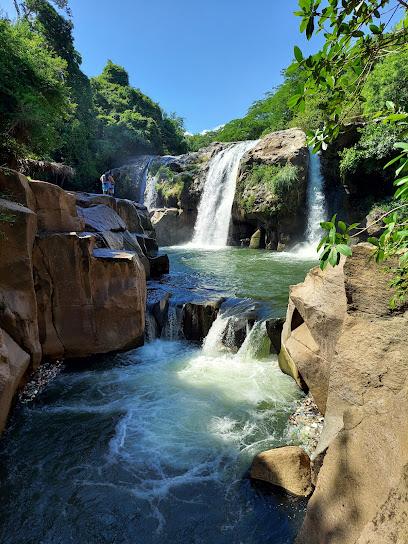
Portezuelo Parque de Aventuras
Experience the thrill of adventure in the heart of nature at Portezuelo Parque de Aventuras, a premier theme park destination in El Salvador.
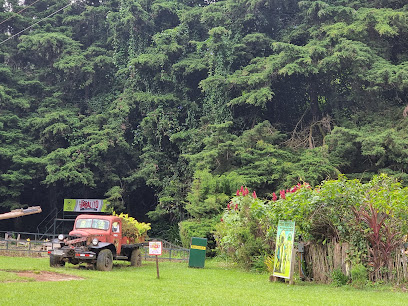
Chorros de la Calera
Explore Chorros de la Calera, a natural paradise in El Salvador known for its breathtaking waterfalls and lush landscapes, perfect for adventure seekers and nature lovers.
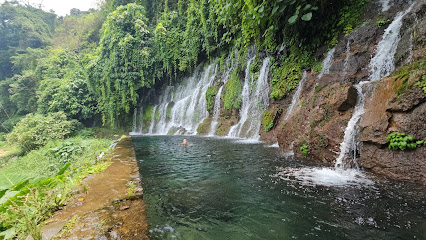
Las Siete Cascadas
Explore Las Siete Cascadas in Juayúa, El Salvador, where breathtaking waterfalls and scenic trails await every nature lover and adventure enthusiast.
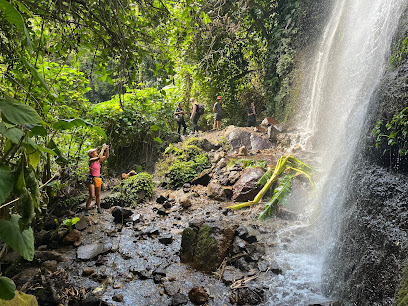
7 cascadas juayua
Experience the natural beauty of El Salvador at the 7 Cascadas in Juayua, a breathtaking series of waterfalls perfect for adventure and relaxation.
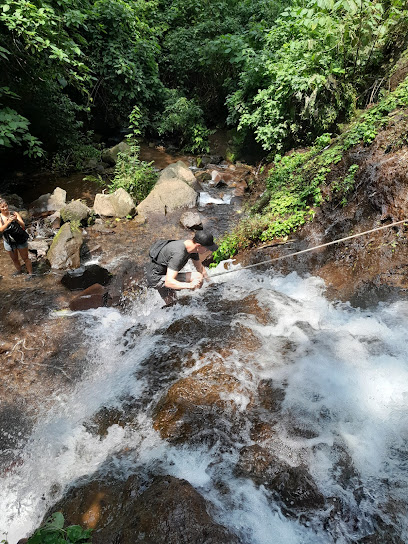
los chorros
Discover the enchanting beauty of Los Chorros, a serene waterfall paradise in El Jute, El Salvador, perfect for nature lovers and adventurers alike.
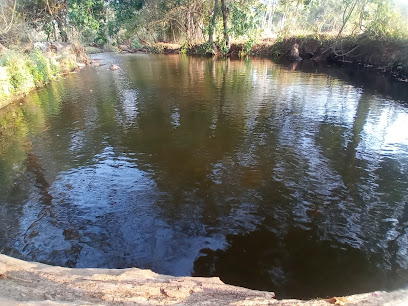
Essential places to dine
El Jardín de Celeste
Discover El Jardín de Celeste: A stunning restaurant along Ruta de las Flores serving delicious Salvadoran cuisine amidst beautiful gardens.
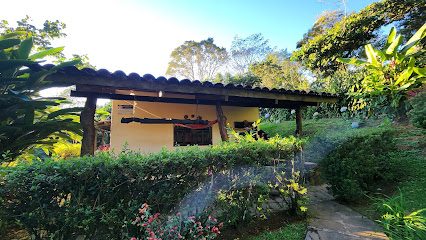
Entre Nubes
Discover Entre Nubes: A must-visit restaurant blending exquisite local cuisine with breathtaking views in El Salvador's lush mountains.
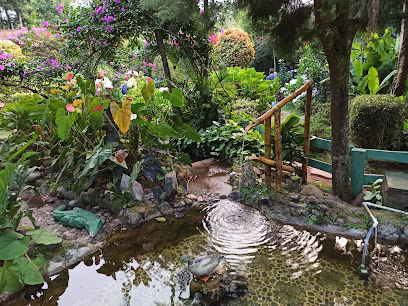
Paso del Alaska Resort • Los Naranjos
Discover Paso del Alaska Resort: A Culinary Haven in Los Naranjos Offering Authentic Salvadoran Flavors Amidst Breathtaking Nature.
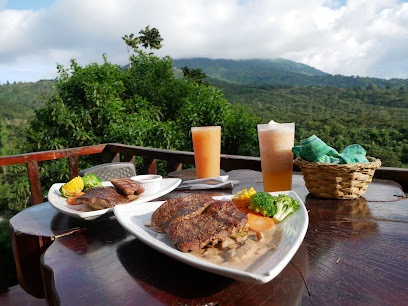
Piccolo Giardino
Discover authentic Italian cuisine at Piccolo Giardino in Concepción de Ataco, where flavor meets tradition in a cozy setting.
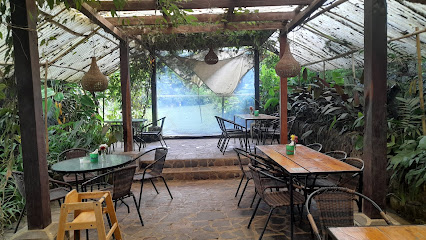
Parque Restaurante La Colina
Discover authentic Salvadoran cuisine in a serene setting at Parque Restaurante La Colina - where flavor meets nature.
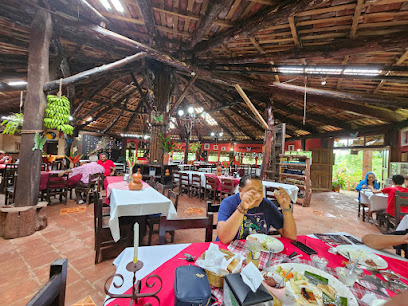
Pupusería Esmeralda
Discover authentic Salvadoran flavors at Pupusería Esmeralda in Juayúa - where every pupusa tells a story.
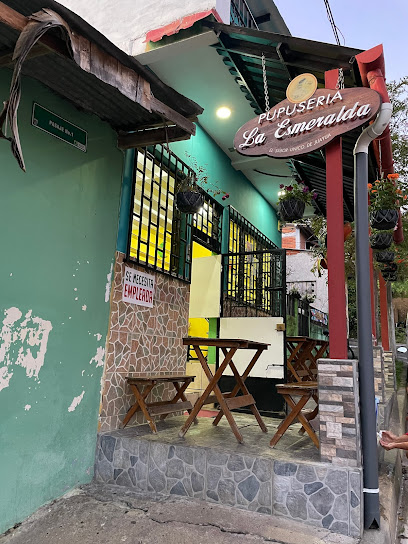
Restaurante San Jose
Experience authentic Salvadoran cuisine at Restaurante San Jose in Juayua - where every meal is a celebration of flavor.
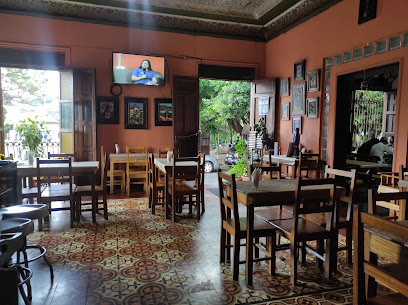
Pupusería y Taquería Doña Cony
Experience authentic Salvadoran cuisine at Pupusería y Taquería Doña Cony in Juayua, known for its delectable pupusas and vibrant atmosphere.
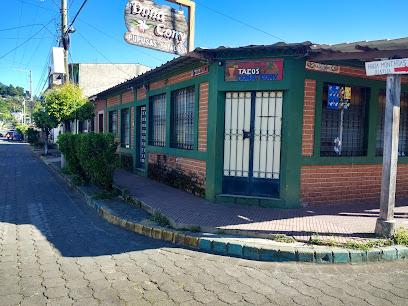
Feria Gastronómica JUAYUTUR y JUAYUART
Discover the vibrant culinary scene at Feria Gastronómica JUAYUTUR y JUAYUART in Juayúa – a feast for your senses filled with local flavors.

Don Pollo • Juayúa
Experience authentic Salvadoran flavors at Don Pollo in Juayúa - where delicious grilled chicken meets warm hospitality.

Markets, malls and hidden boutiques
Chorros de la Calera
Explore the stunning waterfalls and tranquil trails of Chorros de la Calera, a nature preserve perfect for adventure and relaxation in El Salvador.
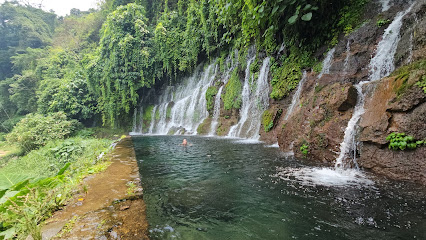
Parque Central
Explore the lush beauty and vibrant atmosphere of Parque Central, a beloved playground in Juayúa, El Salvador, perfect for family fun and cultural experiences.
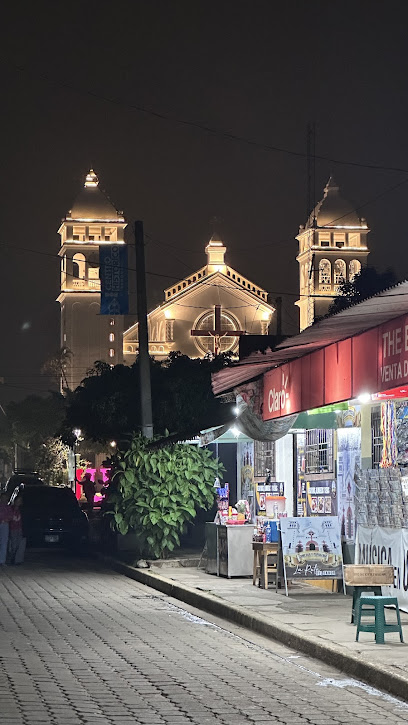
7 cascadas juayua
Experience the breathtaking beauty of 7 Cascadas in Juayúa, where nature's waterfalls create a stunning adventure for all visitors.

Essential bars & hidden hideouts
Chorros de la Calera
Experience the breathtaking beauty of Chorros de la Calera, a nature preserve filled with stunning waterfalls and lush hiking trails in El Salvador.
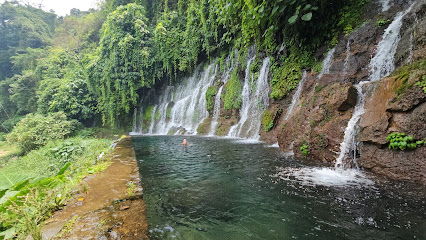
Chiris Bar & Grill
Experience the vibrant flavors of the sea at Chiris Bar & Grill in Juayua, where fresh seafood and a lively atmosphere await you.
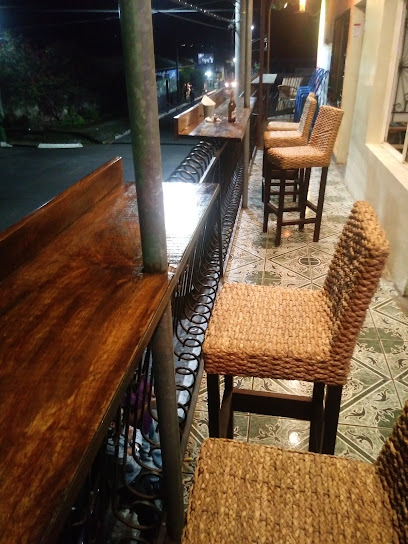
Local Phrases about Los Chorros de la Calera
-
- HelloHola
[oh-lah] - GoodbyeAdiós
[ah-dyohs] - YesSí
[see] - NoNo
[noh] - Please/You're welcomePor favor
[pohr fah-vohr] - Thank youGracias
[grah-syahs] - Excuse me/SorryPerdón
[pehr-dohn] - How are you?¿Cómo estás?
[koh-moh ehs-tahs] - Fine. And you?Bien. ¿Y tú?
[byehn. ee too] - Do you speak English?¿Hablas inglés?
[ahb-lahs een-glehs] - I don't understandNo entiendo
[noh ehn-tyen-doh]
- HelloHola
-
- I'd like to see the menu, pleaseMe gustaría ver el menú, por favor
[meh goos-tah-reeah behr ehl meh-noo, pohr fah-vohr] - I don't eat meatNo como carne
[noh koh-moh kahr-neh] - Cheers!¡Salud!
[sah-lood] - I would like to pay, pleaseMe gustaría pagar, por favor
[meh goos-tah-reeah pah-gahr, pohr fah-vohr]
- I'd like to see the menu, pleaseMe gustaría ver el menú, por favor
-
- Help!¡Ayuda!
[ah-yoo-dah] - Go away!¡Vete!
[veh-teh] - Call the Police!¡Llama a la Policía!
[yah-mah ah lah poh-lee-see-ah] - Call a doctor!¡Llama a un doctor!
[yah-mah ah oon dohk-tohr] - I'm lostEstoy perdido
[ehs-toy pehr-dee-doh] - I'm illEstoy enfermo
[ehs-toy ehn-fehr-moh]
- Help!¡Ayuda!
-
- I'd like to buy...Me gustaría comprar...
[meh goos-tah-reeah kohm-prahr] - I'm just lookingSólo estoy mirando
[soh-loh ehs-toy meer-ahn-doh] - How much is it?¿Cuánto cuesta?
[kwan-toh kwes-tah] - That's too expensiveEsto es demasiado caro
[ehs-toh ehs deh-mah-syah-doh kah-roh] - Can you lower the price?¿Puedes bajar el precio?
[pweh-dehs bah-hahr ehl pree-syoh]
- I'd like to buy...Me gustaría comprar...
-
- What time is it?¿Qué hora es?
[keh oh-rah ehs] - It's one o'clockEs la una en punto
[ehs lah oo-nah ehn poon-toh] - Half past (10)Media (10)
[meh-dyah (deh-eez)] - MorningMañana
[mah-nyah-nah] - AfternoonTarde
[tahr-deh] - EveningNoche
[noh-cheh] - YesterdayAyer
[ah-yehr] - TodayHoy
[oy] - TomorrowMañana
[mah-nyah-nah] - 1Uno
[oo-noh] - 2Dos
[dohs] - 3Tres
[trehs] - 4Cuatro
[kwah-troh] - 5Cinco
[seen-koh] - 6Seis
[seys] - 7Siete
[syeh-teh] - 8Ocho
[oh-choh] - 9Nueve
[nweh-veh] - 10Diez
[dyehs]
- What time is it?¿Qué hora es?
-
- Where's a/the...?¿Dónde está un/el...?
[dohn-deh ehs-tah oon/ehl] - What's the address?¿Cuál es la dirección?
[kwal ehs lah dee-rehk-syohn] - Can you show me (on the map)?¿Puedes mostrarme (en el mapa)?
[pweh-dehs mohs-trahr-meh (ehn ehl mah-pah)] - When's the next (bus)?¿Cuándo es el próximo (autobús)?
[kwan-doh ehs ehl prohk-see-moh (ow-toh-boos)] - A ticket (to ....)Un boleto (a ....)
[oon boh-leh-toh (ah)]
- Where's a/the...?¿Dónde está un/el...?
History of Los Chorros de la Calera
-
Los Chorros de la Calera, a series of natural waterfalls, are located near the town of Juayúa in the Sonsonate department of El Salvador. The falls are fed by natural springs high in the mountains, and their pristine waters cascade down several levels, creating a picturesque and serene environment. The name 'Los Chorros de la Calera' translates to 'The Springs of the Lime Kiln,' a nod to the area's history of lime production.
-
Before the arrival of the Spanish, the region around Los Chorros de la Calera was inhabited by indigenous Pipil people. They were part of the larger Nahua civilization, which had settled in the area around 900 AD. The Pipil people relied on the fertile lands and abundant water sources for agriculture and daily life. The waterfalls were considered sacred and were often used in various ceremonial practices.
-
The Spanish conquest of El Salvador in the early 16th century brought significant changes to the region. The area around Los Chorros de la Calera was integrated into the Spanish colonial system, with the indigenous population being subjected to forced labor in encomiendas. The Spanish introduced new agricultural practices and crops, which led to the development of haciendas in the region. However, the waterfalls remained relatively untouched and continued to be a place of natural beauty and cultural significance.
-
In the late 19th and early 20th centuries, the area around Los Chorros de la Calera became known for its lime kilns. Lime production was an important industry, and the natural resources of the region, including the waterfalls, played a crucial role in the process. The lime was used in construction and agriculture, helping to build infrastructure and support the local economy. Remnants of these historical lime kilns can still be seen near the waterfalls today.
-
In recent decades, Los Chorros de la Calera has become a popular tourist destination. The natural beauty of the waterfalls, combined with their historical and cultural significance, draws visitors from around the world. Efforts have been made to preserve the area and promote sustainable tourism practices. Local guides offer tours that provide insights into the history, culture, and natural environment of Los Chorros de la Calera, ensuring that visitors leave with a deeper appreciation of this unique site.
Los Chorros de la Calera Essentials
-
Los Chorros de la Calera is located near the town of Juayúa in the Sonsonate Department of El Salvador. The closest international airport is El Salvador International Airport (SAL) in San Salvador, approximately 90 kilometers away. From San Salvador, you can take a bus or taxi to Juayúa, which typically takes around 2 hours. From Juayúa, you can either hike to Los Chorros de la Calera or hire a local guide to take you there.
-
Once in Juayúa, you can either walk or take a tuk-tuk (local three-wheeled taxis) to get to the entrance of the hiking trail leading to Los Chorros de la Calera. The hike itself is relatively short and takes about 30 minutes. For those who prefer not to hike, local guides and tuk-tuk drivers offer services to take you directly to the waterfalls. Buses and taxis are available for longer trips around the region.
-
The official currency in El Salvador is the US Dollar (USD). Credit cards are accepted in some hotels, restaurants, and shops in Juayúa, but it is advisable to carry cash, especially for smaller establishments and local markets. ATMs are available in Juayúa, but ensure you have sufficient cash before heading to more remote areas like Los Chorros de la Calera.
-
While Juayúa and Los Chorros de la Calera are generally safe for tourists, it is advisable to take standard precautions. Avoid walking alone at night and keep an eye on your belongings in crowded areas. Be cautious in less populated areas and always inform someone of your plans when hiking. While most of Juayúa is safe, be cautious in neighborhoods that locals advise against visiting, particularly after dark.
-
In case of emergency, dial 911 for immediate assistance. The local police station and medical facilities are available in Juayúa. It is recommended to have travel insurance that covers medical emergencies. For minor health issues, there are pharmacies in Juayúa where you can purchase over-the-counter medications. Local guides can also assist in emergencies while at Los Chorros de la Calera.
-
Fashion: Do dress comfortably and modestly, especially when hiking. Avoid wearing overly revealing clothing. Religion: Do be respectful of local customs and traditions. Public Transport: Do be polite and respectful. Don't eat or drink on public transport. Greetings: Do greet people with a friendly 'Hola' or 'Buenos días'. A handshake is also common. Eating & Drinking: Do try local foods such as pupusas and coffee. Don't refuse hospitality, as it is considered impolite.
-
To experience Los Chorros de la Calera like a local, visit during the weekend when many locals come to enjoy the waterfalls. Engage with local guides who can provide insights about the area and its history. Don't miss the chance to visit Juayúa's famous food festival, held every weekend, where you can try a variety of Salvadoran dishes. Always carry a reusable water bottle to stay hydrated during hikes.
Nearby Cities to Los Chorros de la Calera
-
Things To Do in Santa Ana
-
Things To Do in San Salvador
-
Things To Do in La Libertad
-
Things To Do in Suchitoto
-
Things To Do in Guatemala City
-
Things To Do in Copán Ruinas
-
Things To Do in Antigua Guatemala
-
Things To Do in Santa Rosa de Copán
-
Things To Do in Gracias
-
Things To Do in San Miguel
-
Things To Do in Panajachel
-
Things To Do in Lake Atitlán
-
Things To Do in Chichicastenango
-
Things To Do in Quetzaltenango
-
Things To Do in Rio Dulce





